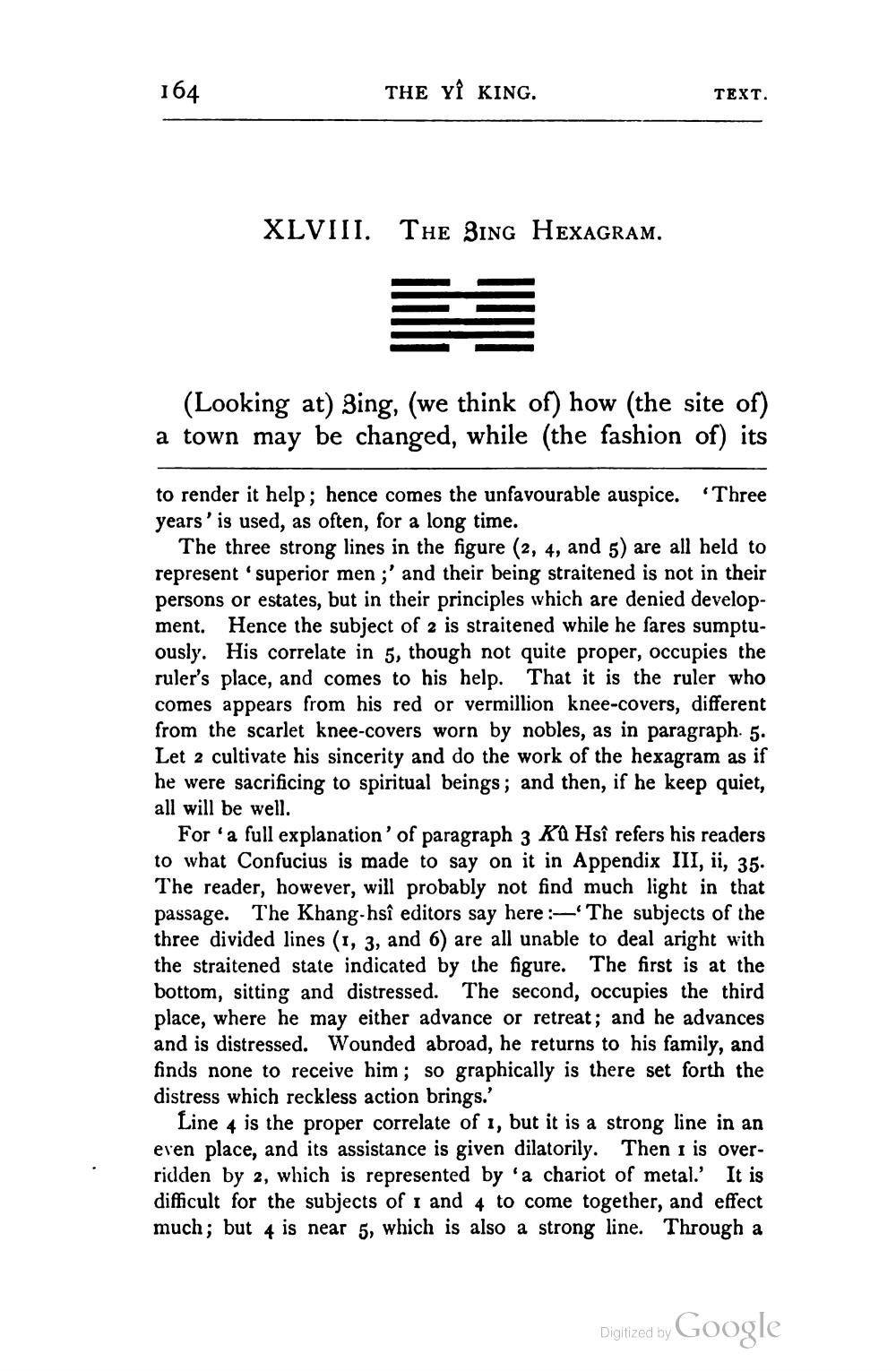________________
164
THE YÎ KING.
TEXT.
XLVIII. The ZING HEXAGRAM.
(Looking at) Zing, (we think of) how (the site of) a town may be changed, while (the fashion of its
to render it help; hence comes the unfavourable auspice. "Three years' is used, as often, for a long time.
The three strong lines in the figure (2, 4, and 5) are all held to represent 'superior men ;' and their being straitened is not in their persons or estates, but in their principles which are denied development. Hence the subject of 2 is straitened while he fares sumptuously. His correlate in 5, though not quite proper, occupies the ruler's place, and comes to his help. That it is the ruler who comes appears from his red or vermillion knee-covers, different from the scarlet knee-covers worn by nobles, as in paragraph. 5. Let 2 cultivate his sincerity and do the work of the hexagram as if he were sacrificing to spiritual beings; and then, if he keep quiet, all will be well.
For a full explanation' of paragraph 3 KU Hsî refers his readers to what Confucius is made to say on it in Appendix III, ii, 35. The reader, however, will probably not find much light in that passage. The Khang-hsî editors say here :-'The subjects of the three divided lines (1, 3, and 6) are all unable to deal aright with the straitened state indicated by the figure. The first is at the bottom, sitting and distressed. The second, occupies the third place, where he may either advance or retreat; and he advances and is distressed. Wounded abroad, he returns to his family, and finds none to receive him ; so graphically is there set forth the distress which reckless action brings.'
Line 4 is the proper correlate of 1, but it is a strong line in an even place, and its assistance is given dilatorily. Then I is overridden by 2, which is represented by 'a chariot of metal. It is difficult for the subjects of 1 and 4 to come together, and effect much; but 4 is near 5, which is also a strong line. Through a
Digitized by Google




